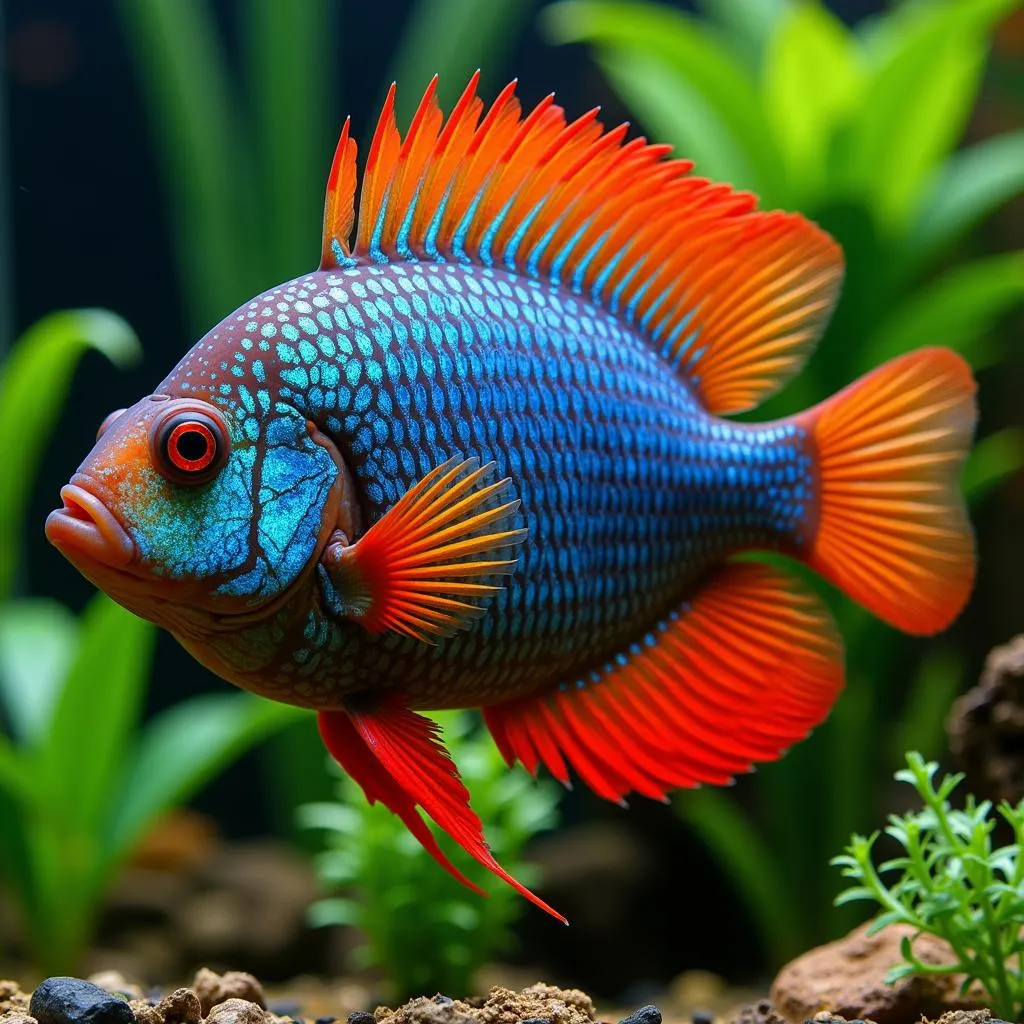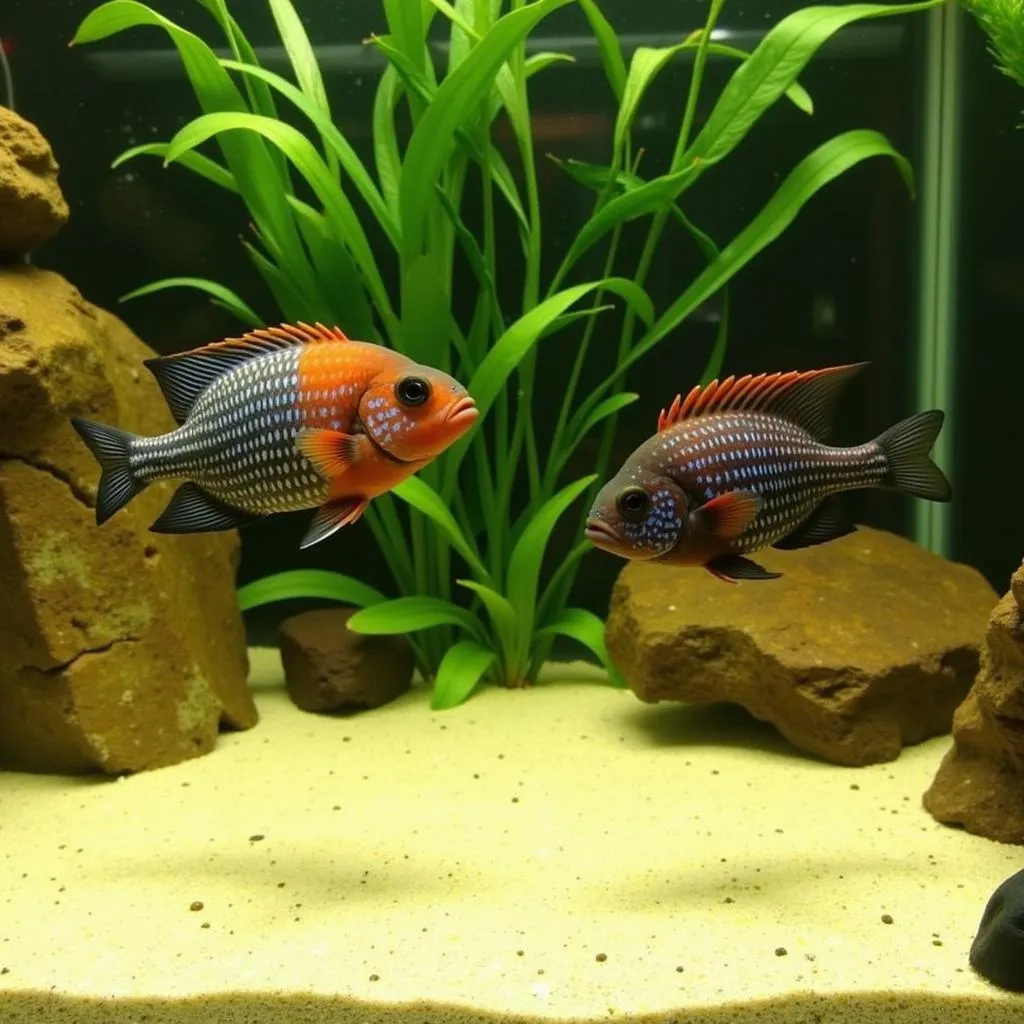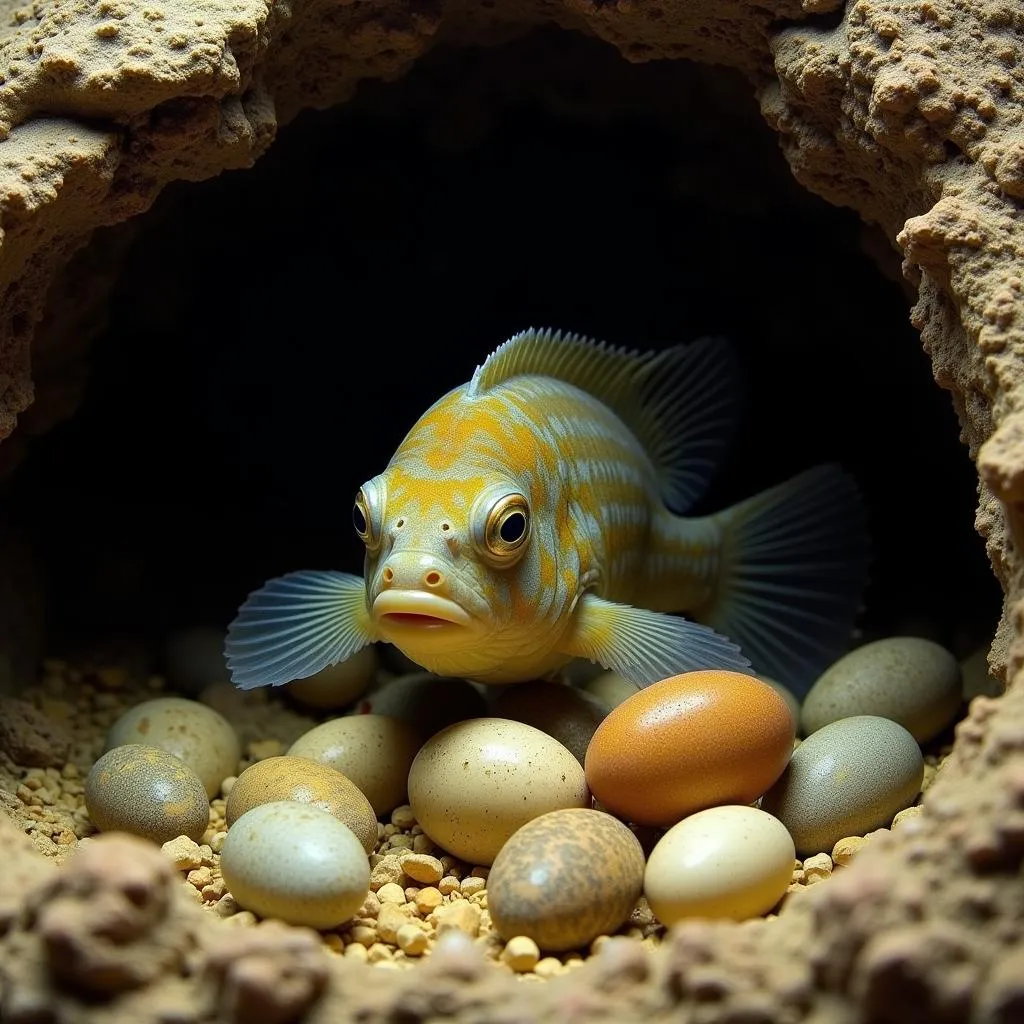The African Fire Jewel Cichlid: A Guide to Keeping This Stunning Species
The African Fire Jewel Cichlid (Hemichromis lifalili), also known as the lifalili cichlid or simply fire jewel, is a freshwater fish prized for its vibrant colors and engaging personality. Native to Lake Tanganyika in East Africa, this cichlid species adds a splash of the tropics to any home aquarium with its fiery orange, red, and blue hues. This comprehensive guide explores everything you need to know about keeping African fire jewel cichlids, from tank setup and water parameters to diet, breeding, and more.
 Male African fire jewel cichlid with extended fins displaying vibrant colors
Male African fire jewel cichlid with extended fins displaying vibrant colors
Creating the Ideal Habitat for Your Fire Jewels
African fire jewel cichlids thrive in a spacious and well-maintained aquarium that mimics their natural Lake Tanganyika environment.
- Tank Size: A minimum tank size of 30 gallons is recommended for a single pair, with larger tanks (55 gallons or more) being preferable for community setups.
- Substrate: A sandy substrate is ideal, allowing these natural burrowers to dig and create territories.
- Rocks and Caves: Provide ample hiding spaces with rocks, caves, and driftwood to mimic their natural rocky habitat. These will also serve as potential spawning sites.
- Plants: While not essential, hardy plants like Java fern or Anubias can add visual appeal and provide additional cover for the cichlids. However, be aware that fire jewels might nibble on softer plants.
Water Parameters: Replicating Lake Tanganyika
Maintaining the correct water parameters is crucial for the health and well-being of your African fire jewel cichlids.
- Temperature: Maintain a stable water temperature between 78-82°F (25-28°C).
- pH: These cichlids prefer slightly alkaline water with a pH range of 7.5-8.5.
- Hardness: Aim for a water hardness level between 10-20 dGH.
- Water Changes: Perform regular water changes of 25-50% weekly to maintain water quality and remove accumulated nitrates.
 A pair of African fire jewel cichlids in a spacious community tank
A pair of African fire jewel cichlids in a spacious community tank
The African Fire Jewel Diet: Feeding Your Fiery Friends
African fire jewel cichlids are omnivores and require a varied diet consisting of both meaty and plant-based foods for optimal health.
- High-Quality Flake or Pellet Food: Provide a staple diet of high-quality cichlid-specific flake or pellet food.
- Live and Frozen Foods: Supplement their diet with live and frozen foods like brine shrimp, bloodworms, and daphnia.
- Vegetable Matter: Offer blanched spinach, zucchini, or peas occasionally.
Understanding African Fire Jewel Cichlid Behavior
African fire jewel cichlids are known for their intelligence and engaging personalities, but they can also be territorial, especially during breeding season.
- Aggression: These cichlids are relatively peaceful compared to some other cichlid species, but they can exhibit aggression towards tank mates, particularly during breeding.
- Tank Mates: Choose tank mates carefully, opting for other peaceful but similarly sized African cichlids or robust community fish that can tolerate their boisterous nature. Avoid keeping them with smaller, more timid species.
- Observation: Careful observation of your cichlids’ behavior is key. Look out for signs of aggression, such as fin-nipping or chasing, and be prepared to adjust tank mates or tank setup if necessary.
Breeding African Fire Jewel Cichlids: A Rewarding Experience
Breeding African fire jewel cichlids can be a rewarding experience for aquarists. These cichlids are egg-layers and exhibit fascinating parental care.
- Spawning: During spawning, the female will lay eggs on a flat surface, such as a rock or inside a cave. The male will then fertilize the eggs.
- Parental Care: Both parents will fiercely guard the eggs and fry, fanning them with their fins to provide oxygen and chasing away any potential threats.
- Fry Care: Once the fry hatch, they can be fed with baby brine shrimp or crushed flake food.
 An African fire jewel cichlid female diligently guarding her eggs in a cave
An African fire jewel cichlid female diligently guarding her eggs in a cave
Conclusion: The African Fire Jewel Cichlid – A Stunning Addition to Your Aquarium
With their vibrant colors, engaging personalities, and fascinating breeding behaviors, the African fire jewel cichlid is a captivating addition to any home aquarium. By understanding their needs and providing them with a suitable environment, you can enjoy the beauty and wonder of these fiery jewels for years to come.

